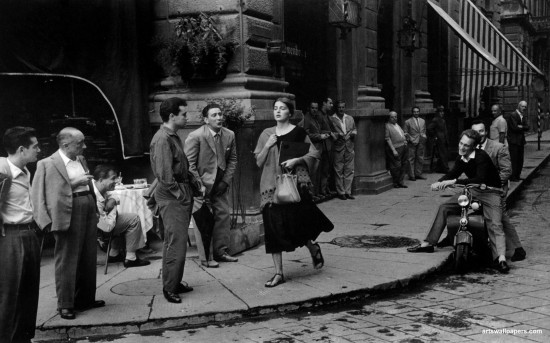Jack at Ethics Alarms quotes Emily Moss’ A Letter To The Guy Who Harassed Me Outside The Bar (which I linked to last week). Jack comments:
The amazing thing is that this kind of ritual harassment would vanish with some slight behavioral additions to our culture, many of which once were the norm…
Too many people think that a return to old-fashioned norms would mean that women wouldn’t be subject to street harassment anymore.
Via Pharyngula, a fascinating article in The Believer about an incident in 1906, when opera singer Ernie Caruso was put on trial for allegedly rubbing up against women at the zoo.
When a man wrote in to the New York Times to say he had never seen any improper treatment of women in public places in New York, numerous women quickly responded with assertions to the contrary. Typical were letters claiming that inappropriate behavior by well-dressed men was far from unusual and praising the police prosecution of the case. According to one letter about harassment on elevated trains, “these detestable practices do not seem to be confined to any particular line of cars nor any one class of men.”
So just like now, in 1906 women on the street were being hassled by roachbags. Just like now, some people (mainly men) claimed that no, it didn’t happen, or if it did happen then it wasn’t so bad.
And just like now, the victims were blamed. Caruso’s defenders claimed that the women had led Caruso on with their slutty lady eye glances.
In fact, the named victim at Caruso’s trial was was extremely reluctant to be identified, presumably for this exact reason:
The woman whom Caruso allegedly molested identified herself as “Mrs. Hannah Graham of 1756 Bathgate Avenue, the Bronx,” but reports noted that she had been reluctant to become involved in a police matter for fear of jeopardizing her reputation as a “respectable” woman, and that she submitted her name and address only under pressure by the arresting officer, James J. Cain.
The name later turned out to be a fake.
It’s probably true that we more often hear about street harassment nowadays. But I’m pretty sure that what’s changes is not the harassment part, but the “we hear about it” part.
UPDATE: Jack has updated his post with a response to this post, saying that I’ve misread him. (Wouldn’t be the first time.)




It seems the same problems persist generation after generation. But even if fighting them made no difference, wouldn’t fighting them still be the right thing to do?
Pingback: And The Solution To This Phenomenon Is Simply Ethics. Why Is That So Hard? | Ethics Alarms
There used to be a lot of popular songs talking about how much fun it is to stand around and catcall women. (The two I can think of off the top of my head are “Girl Watcher” and “Standing on the Corner,” but I’m sure there were more.) The earliest song that I can think of where women were talking about how totally irritating it is is “No Scrubs” from 1999.
Street harassment is new? Hardly.
Pingback: [link] Street harassment, in 1906 and now | feimineach.com
Ruchama, I’d say Fugazi’s “Suggestion” talks about street harassment of women by men, but it’s sung by men. 1988.
Anyone else find it ironic that in the comments of the Ethics Alarm post, Steven Mark Pilling, basically does the online version of street harassment?
And Jack plays the part of online bystander as he doesn’t call Steven out (despite several women trying to fight back) until a man does!
Pilling is a Benevolent Patriarch. If only you feminist bitches hadn’t ruined anything, the Good Men would cherish and protect you and none of this would ever happen, etc etc etc.
I’m absolutely sure people have behaved terribly in public, and I’m sure it tends to happen less now that it used to, given we’re more civilised now. I’m certain if I was out with a group of WWII sailors around the docks for a drink my delicate modern sensitivities would horrified. But…
The concept of sexual harrassment is a modern idea. It was invented in the 70s and popularised in the 90s. Street harrassment is a recent extension of that – essentially to public spaces – while sexual harrassment was conceptualised as around employment. It did not exist in 1906.
None of the Caruso stuff is thought of in that manner. It seems to be old-fashioned sexual assault, and thought of as that, but prosecuted as disorder because of lower evidential standards. No-one seems to have said what Caruso did was wrong for the reasons that Moss gave; it contributes to rape culture, diminishes feelings of comfort/safety, is a violation of personal space, contributes to the subordination of women, etc. A lot of the stuff Moss talks about aren’t grievences people would have had the language to express, since lots of the ideas wouldn’t have existed in 1906.
Pingback: HOLLA-worthy Link Roundup | Boston Hollaback!
The true story of that Ruth Orkin photograph, by the girl in the picture: